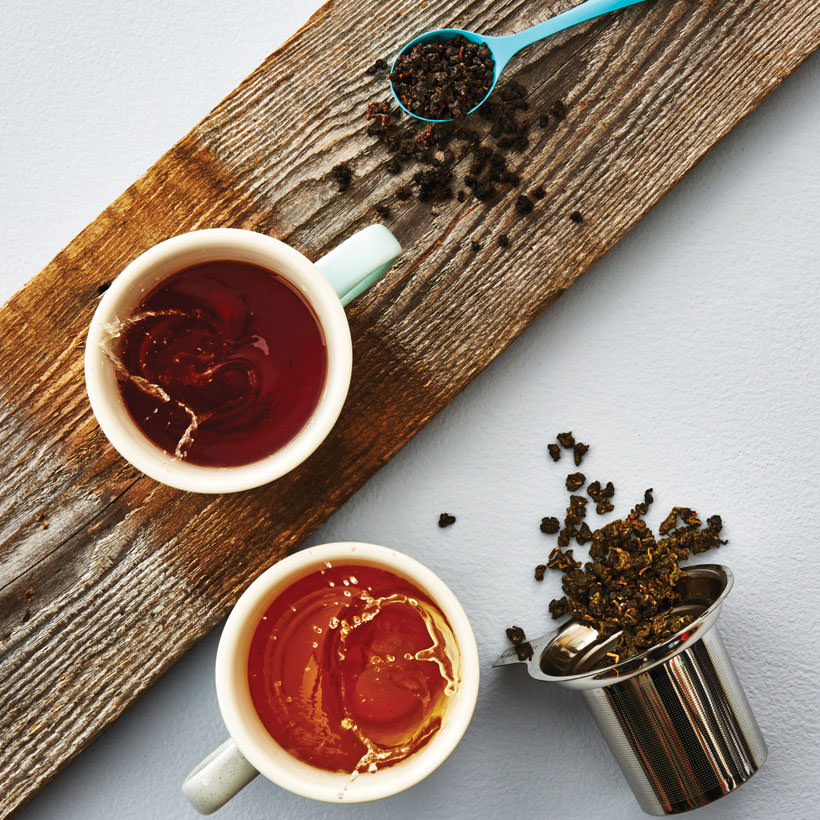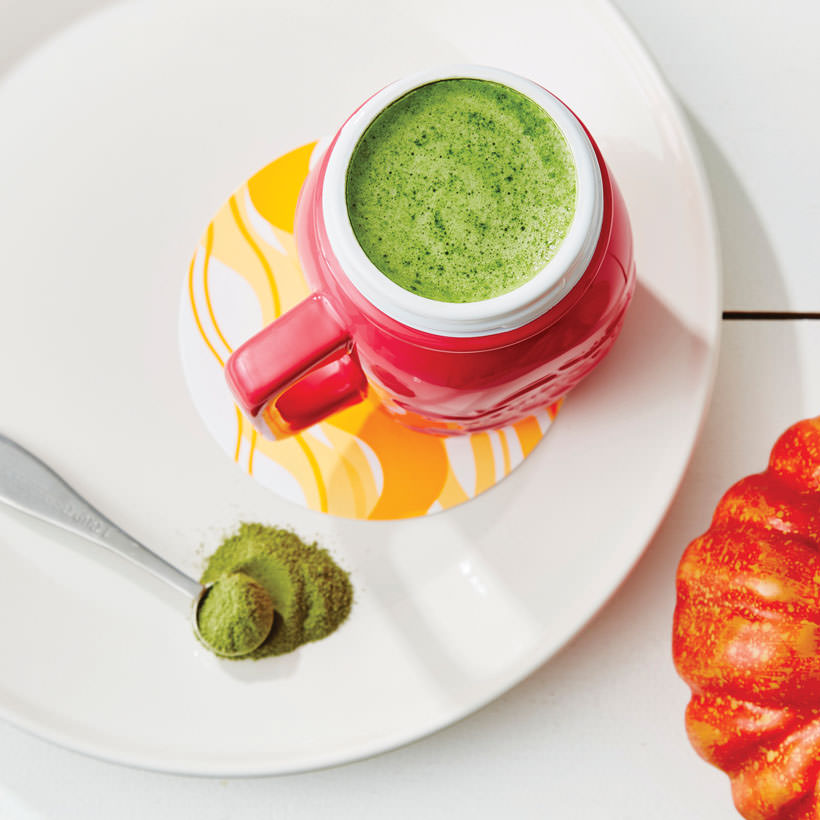
Flavors of tea to steep and savor
Tea drinking is my most consistent and comforting ritual to cleanse the palate. My typical routine for brewing tea involves boiling water while I’m cleaning up after a meal. I then allow my choice of tea to steep for a bit. Often, I pair the tea with a piece of fruit. I love this ritual so much that when I’m preparing to travel, I pack a few tea bags in my luggage. Those few soul soothing, sweet moments with my tea make me feel at home wherever I am.
I love the many ways that tea can be savored and I appreciate its many health benefits. When I brew tea, I remember that I’m part of a longstanding tradition that spans thousands of years across continents. After water, it’s tea (not coffee) that is the most popular beverage worldwide.
Health Benefits of Brewing Tea
We love tea for its flavors, floral notes, ease of preparation, and for its diversity of options. Tea has a wide range of medicinal benefits. We may enjoy the pick-me-up or increase in alertness created by the caffeine and theanine in all varieties of tea. Tea is also rich in a number of phytochemicals. The most significant is polyphenols. One type of polyphenol are flavonoids. These compounds are powerful antioxidants, with a wide range of beneficial effects. ECGC is a potent and well-studied flavonoid as are epicatchenins and catechins, if you’ve heard those teams bandied about when reading or talking about tea.
Because tea is so ubiquitous and beloved, it is also well studied. Some of the highly touted benefits from the antioxidants and other phytochemicals and phytonutrients include cancer protective effects, reduced risk of stroke, improved cholesterol levels and overall blood vessel health, protective effects for the lungs. John Weisburger, senior researcher at the Institute for Cancer Prevention in Valhalla, NY, says, “tea modifies the metabolism to destroy harmful chemicals.” I think I need another cup.
What Exactly is Tea, and Where is it From?
When we think of tea, we may think of the multitude of drinks that are created by steeping herbs, leaves, or other parts of medicinal plants in hot water. Yet those are really infusions, tisanes, or to distinguish them, herbal teas. The word tea itself comes from Chinese languates and originally referred to beverages made from steeping the leaves from the evergreen shrub Camellia sinensis.
Camellia sinensis is the plant we most commonly think of as our standard teas (green, white, black, oolong, and pur-eh.) Not to complicate matters too much, but there are actual main varieties of this plant used for tea: Camellia sinensis sinensis and Camellia sinensis assamica. The sinensis strain has smaller leaves and the assamica plant has larger leaves. As its name suggests, the assamica strain is the one that is native to the Assam region of India. Yet not to confuse you, the Assam variety is also grown in Yunnan province, China.
Famous Tea Regions of India
Assam is a lush area in the far northeastern part of India, south of Bhutan and north of Bangladesh. While China as a country is the world’s largest grower of tea, the most significant region tea growing region worldwide is Assam. Yogi Tea is a company who sources all of the black tea in their blends from the Assam region of India.
Darjeeling is slightly west of Assam, tucked between Nepal and Bhutan. It is the northernmost region of the Indian state of West Bengal. Unlike the assam tea grown in Assam, the smaller leaved sinensis tea is grown in Darjeeling to produce black, white, green, and oolong teas with an astringent yet floral set of notes.
The Many Colors of Tea
As DAVIDsTEA Tea Expert Celia Le Maistre-Matthys says, “The first thing to know about white, green, oolong, pu’erh, and back teas is that they all come from the same plant – Camellia sinensis! The main difference between tea types is how they are made.”
White Tea
Le Maistre-Matthys says this about white tea, “it is plucked then let to wither (or wilt naturally), and finally dried to obtain a finished product. It is neither rolled nor shaped, so the leaf remains in its original form. White tea is often known to be more floral in taste, which is a result of its long withering period. Often, however, delicate notes of ripe fruit and citrus can be found in a white tea.”
Steep: 2-3 minutes with water just under boiling (170-185 F).
Green Tea
“Green teas have an extra step in their creation. The withering or oxidation process is stopped and the enzymes in the leaf are fixed in their state by exposing them to heat, typically through pan-firing, steaming, or baking. This is what stops the leaf from darkening and keeps the tea green,” according to Le Maistre-Matthys.
There are many different types of green tea. Generally the top leaves are chosen for sencha. Hojicha is roasted and then chilled in processing. Kabuscha is grown in the shade. Genmaicha is a blend of green tea and toasted rice. Sincha is one of the first harvested in the season.
When it comes to what makes green tea unique, Sebastian Pole co-founder of Pukka Herbs says, “A good quality green tea is sweet and smooth with the wonderful ability to lift your energy and allow clarity to reign supreme. Along with its potent levels of antioxidant polyphenol catechins (like EGCG), it’s highish levels of L-theanine induce a suitable flow of alpha waves – inducing a meditative like state of focused calm.” In addition, since green tea is only lightly oxidized, it has a higher Vitamin C content than black tea.
Steep: 2-3 minutes in water just under boiling (170-185 F).
Oolong Tea
Oolong represents a small percentage of the world’s tea. It’s process puts it somewhere between the lightly oxidized green tea and the darker black tea, so it is partially oxidized. This gives oolong its distinct flavor palate. Its color can vary and it is said to have some of the health benefits of both green and black teas.
Steep 2-3 minutes in water just under boiling (170-185 F).
Black Tea
Of all these different types of tea, black tea is the most oxidized or fully fermented. This process creates the specific polyphenols that are responsible for the distinct characteristics and benefits of black tea.
Black tea is the base for chai masala, the Indian spiced drink. Some of the typical herbs the make up the masala include cinnamon, cardamom, ginger, cloves, nutmeg, and even black pepper. These have health benefits of their own. Another famous type of black tea is Earl Grey, flavored with the oil from the citrus fruit bergamot. On its own, bergamot is also known to have uplifting effects.
According to Pole, “Black tea is rich and malty bringing strength and support. Its brimming with a different range of antioxidants than green tea, such as the theaflavins and thearubigens, that interact together to bring vitality and health protection. Black tea is helpful for enhancing concentration as well as strengthening the elasticity of the blood vessels.”
Steep 3-5 minutes in boiling water (200-212 F).
Pu-erh
Pu-erh is still a type of tea, yet the process is a bit different from all of the other varieties. Erin O’Hara, Senior Manager of Innovation at Numi Organic Tea says that Pu-erh has the following attributes:
Pu-erh is an ancient tea originating from Yunnan, China. It is different from other teas as it undergoes a unique fermentation process, resulting in a rich earthy flavor with hints of malt plus many health benefits that have been touted for hundreds of years.
By tradition, pu-erh is found in brick-like formation, in which a piece can be broken off before steeping it in hot water. However, there are teabags of pu-erh also available for convenient steeping and to meet the demand of its more recent popularity.
Tea enthusiasts drink pu-erh for its smooth taste and how it makes them feel. In China, pu-erh is often called “the skinny girl tea” and consumed with dim sum. Pu-erh has been traditionally known to improve digestion and metabolism, help weight management, and provide a natural boost of sustained energy.
Steep 2-3 minutes in boiling water (200-212 F).

Let’s Talk about Matcha
Matcha is a type of green tea, but not just any green tea. According to John Boyd, CEO and Founder of Buddha Teas, “To make Matcha correctly, the farm must shade the plants four weeks before harvesting the leaves. The lack of sunlight increases the absorption of nutrients from the fertilized earth. Good matcha is buttery, smooth and never bitter.”
After the matcha is harvested and processed, the whole leaf is powdered. When you drink matcha, you are ingesting the whole plant. Boyd says, “In my opinion, Matcha is the healthiest thing you can drink aside from water. It contains 100 times the antioxidants of regular green tea because you’re consuming the whole leaf.” Matcha is commonly used in Japanese tea ceremonies as well as in recipes in the Japanese culinary traditions.
Appreciate Brewing Tea
There are so many ways to enjoy tea, whether you are serving it at a gathering or sipping for a solo ritual. When you steep the brew and drink, make sure to appreciate tea’s aromas, flavors, and health benefits.
**Thanks to Numi Tea for brewing instructions.
Kayla Rose Freudenberg is a yoga teacher and plant-based chef based in Orange County who believes that optimal health is an achievable goal for everyone. Kayla combines the principles of yoga, mindfulness, and nourishing food to guide and maintain the well-being of her students and clients.
